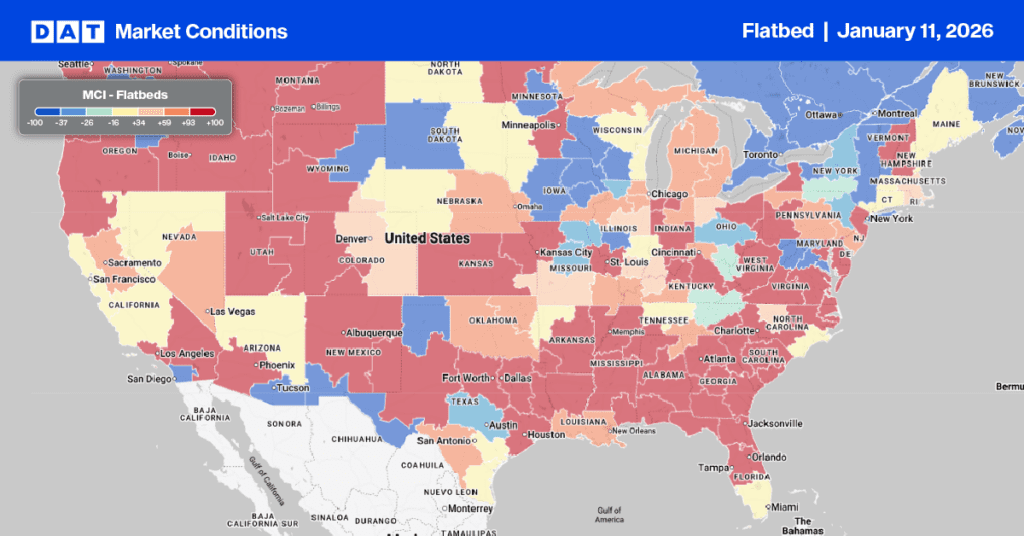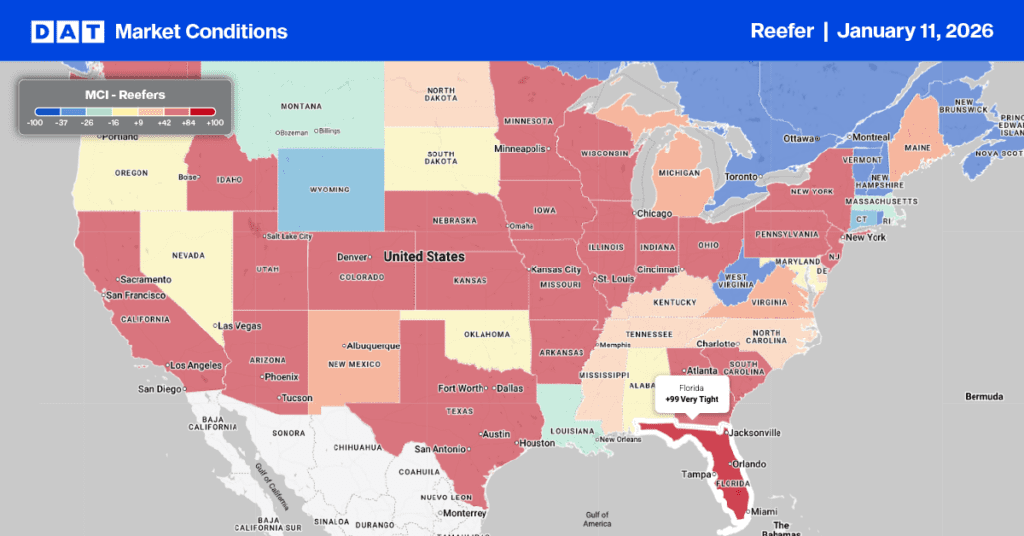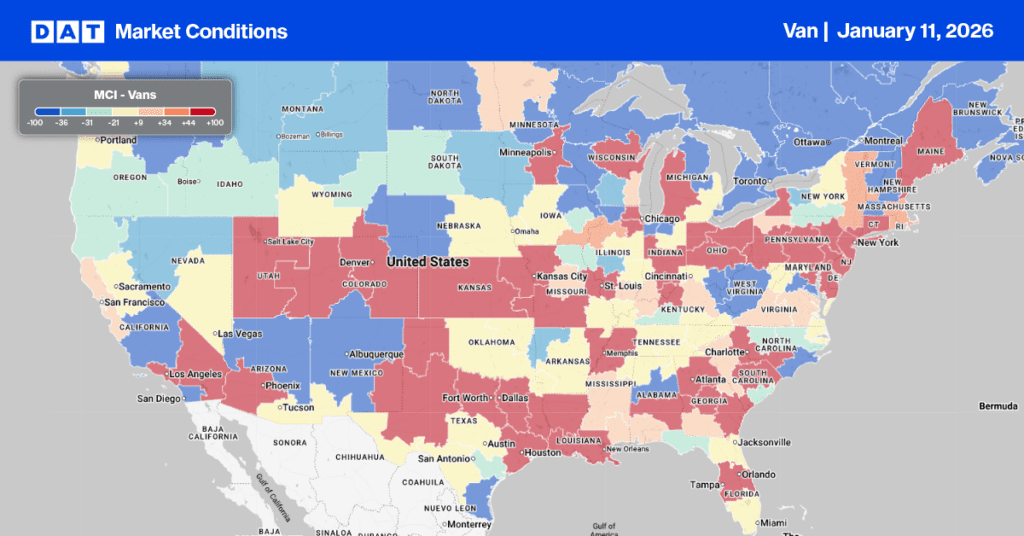The unofficial starting date for the 2024 produce season has been announced.
The unofficial starting date for the 2024 produce season has been announced for truckload carriers, and it’s April 17th when the much-awaited Vidalia onion begins shipping. Around the same time, the Florida produce season is almost halfway through peaking in May, followed by the start of the peach season in Georgia and South Carolina in June. This creates a chain reaction for higher reefer demand in the Southeast, eventually spreading nationwide as summer crops are harvested.
In a typical year, reefer truckload capacity begins to tighten at the start of April each year and then extends to the July 4th holiday break. There are signs that this is already starting as reefer spot rates in California and Florida increase as produce ships in meaningful volumes.
Why is the Vidalia Onion so famous?
In a news release, Georgia Agriculture Commissioner Tyler Harper said, ” Georgia-grown Vidalia onions are recognized around the globe for their iconic, sweet flavor that culinary leaders and home chefs treasure. This is an exciting time for Georgia farmers and consumers alike as we look forward to enjoying the sweet onion again.”
The Vidalia onion crop is carefully hand-planted and hand-harvested each year, ensuring that only the highest-quality onions make it to market. According to the Vidalia Onion Committee (VOC), 11,000 acres were dedicated to growing Vidalia onions for the 2024 season. On average, each acre contains around 90,000 Vidalia onion plants. This means over 900 million Vidalia onion plants were grown for the 2024 season alone!
Vidalia onion devotees eagerly await the announcement of the pack date or time shoppers will soon be able to purchase the product, which is only available for a limited time each year. The date is determined each year by the Vidalia Onion Committee (VOC), composed of industry members, agriculture scientists, and the Department of Agriculture, based on soil and weather conditions in South Georgia. The shipping season typically spans 20 weeks from the pack date to the end of August and is celebrated yearly at the Vidalia Onion Festival. This year, the big event will be held from April 25 to 28 in Vidalia, Georgia.
“Vidalia onion” is a trademarked name for 60 registered growers in 20 southeastern Georgia counties. Because Vidalia onions are unique, farmers united in seeking legal protection for their crop and its name in 1989 through Federal Marketing Order No. 955. This defines where the crop can be grown and by whom, but growers cannot call it a “Vidalia” unless it is from Georgia.
Where do onions come from anyway?
According to the VOC, they ship around 200 million pounds of Vidalia onions annually. That’s almost 5,000 truckloads distributed across the country and Canada each year! The U.S. also imports about 13% of annual onion tonnage — 56% from Mexico and 38% from Peru. Mexico’s shipping volumes peak in March and usually run through to the end of June, when the Peru season ramps up and continues through March each year.
In the U.S., onions grow in or near many of the same regions as potatoes, so it’s no surprise to see states including Washington, Idaho, Oregon, and California at the top of the list. So far this year, Washington State has shipped around 43% of truckload volume, according to the USDA, followed by Idaho (26%), and Oregon (15%).
In the Pacific Northwest (PNW), onions ship from August until March or April. Between the Georgia and PNW onion seasons, New Mexico and California reach their harvest peak, providing a constant year-round supply of onions for the U.S. market.


